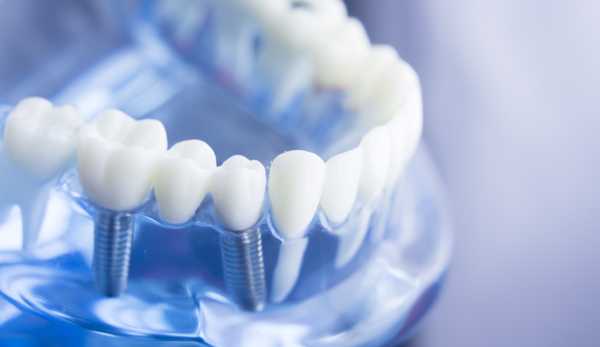【公式】ラボで育成されたダイヤモンドとは?エシカルで美しい選択をあなたに
Your Complete Guide to Crohn's Disease Differential Diagnosis
Crohn’s disease (CD) is a chronic inflammatory bowel disease (IBD) that can affect any part of the gastrointestinal (GI) tract, leading to symptoms such as abdominal pain, diarrhea, weight loss, and fatigue. However, diagnosing Crohn’s disease can be challenging due to its varied presentations and overlap with other GI conditions. This guide explores the key conditions to consider in the differential diagnosis of Crohn’s disease and the tools for accurate diagnosis.
Crohn’s disease (CD) is a chronic inflammatory bowel disease (IBD) that can affect any part of the gastrointestinal (GI) tract, leading to symptoms such as abdominal pain, diarrhea, weight loss, and fatigue. However, diagnosing Crohn’s disease can be challenging due to its varied presentations and overlap with other GI conditions. This guide explores the key conditions to consider in the differential diagnosis of Crohn’s disease and the tools for accurate diagnosis.

1. Understanding Crohn's Disease
Crohn’s disease is characterized by chronic inflammation that can affect any part of the GI tract, from the mouth to the anus, although it most commonly affects the terminal ileum and colon. The inflammation typically involves all layers of the bowel wall, leading to complications like strictures, fistulas, and abscesses.
Common symptoms of Crohn’s disease include:
- Abdominal pain(often in the lower right quadrant)
- Chronic diarrhea(sometimes with blood)
- Weight loss
- Fatigue
- Fever
- Malabsorption, leading to nutritional deficiencies
2. Key Considerations in Differential Diagnosis
Several conditions can present similarly to Crohn’s disease, making a thorough differential diagnosis crucial.
a. Ulcerative Colitis (UC)
UC is another type of inflammatory bowel disease (IBD), but it is confined to the colon and rectum. Key distinguishing features include:
- Location: UC affects only the colon, while Crohn’s can affect any part of the GI tract.
- Pattern: UC shows continuous inflammation, while Crohn’s disease exhibits "skip" lesions (patchy inflammation).
- Histology: UC involves superficial mucosal ulceration, while Crohn’s affects all layers of the bowel wall.
b. Infectious Gastroenteritis
Infections like Salmonella, Shigella, or Campylobacter can mimic Crohn’s symptoms (diarrhea, abdominal pain). However:
- Duration: Infections resolve in days to weeks, while Crohn’s is chronic.
- Fever: Infections typically cause higher fever.
- Stool tests: Pathogen detection can help differentiate.
c. Irritable Bowel Syndrome (IBS)
IBS is a functional GI disorder, often presenting with abdominal pain and changes in bowel habits. However:
- No inflammation: IBS doesn’t involve inflammation, whereas Crohn’s does.
- Blood in stool: Blood is common in Crohn’s but not in IBS.
- Endoscopy: IBS shows no mucosal damage.
d. Celiac Disease
Celiac disease presents with diarrhea, weight loss, and abdominal discomfort, similar to Crohn’s. Key differences include:
- Trigger: Celiac is triggered by gluten, while Crohn’s is not diet-related.
- Histology: Celiac shows villous atrophy in the small intestine, while Crohn’s shows transmural inflammation.
- Serology: Positive tissue transglutaminase (tTG) or endomysial antibodies confirm celiac.
e. Gastrointestinal Tuberculosis (GI TB)
GI tuberculosis can mimic Crohn’s, particularly in high TB-prevalence areas. Distinguishing features include:
- History of TB exposure: Previous TB history raises suspicion.
- Imaging: GI TB typically shows localized strictures or ulcerations.
- Histology: GI TB biopsy shows granulomas with acid-fast bacilli (AFB).
- Response to antituberculous therapy: Improvement with TB treatment suggests GI TB.
f. Diverticulitis
Diverticulitis, an inflammation of colon diverticula, shares symptoms like abdominal pain and fever. Key differences:
- Location: Diverticulitis typically affects the sigmoid colon; Crohn’s can affect any part of the GI tract.
- Imaging: CT can differentiate localized diverticulitis from Crohn’s.
- Histology: Diverticulitis doesn’t show full-thickness inflammation like Crohn’s.
g. Colorectal Cancer
Advanced colorectal cancer can cause symptoms like weight loss, abdominal pain, and changes in bowel habits. Distinguishing features:
- Age of onset: Colorectal cancer is more common in older adults, while Crohn’s disease typically presents in young adults.
- Blood in stool: Cancer often presents with occult blood; Crohn’s can cause visible blood.
- Imaging: Colonoscopy reveals masses in cancer, while Crohn’s shows inflammation, strictures, or fistulas.
h. Mesenteric Ischemia
Mesenteric ischemia, caused by reduced blood flow to the intestines, can mimic Crohn’s but has several distinguishing features:
- Pain: Mesenteric ischemia pain is often disproportionate to physical findings, whereas Crohn’s pain is localized.
- Imaging: CT or MRI angiography can reveal vascular occlusion in ischemia.
3. Diagnostic Workup
To confirm Crohn’s disease and rule out other conditions, a thorough diagnostic approach is essential.
a. Clinical Evaluation
A comprehensive history and physical exam are critical. Key questions include:
- Family history of IBD
- Recent infections or travel history
- Medication use or history of autoimmune disorders
b. Laboratory Tests
- C-reactive protein (CRP) and erythrocyte sedimentation rate (ESR): Elevated levels suggest active inflammation.
- Fecal calprotectin: Helps differentiate inflammatory conditions from IBS.
- Blood tests: Anemia and electrolyte abnormalities may suggest Crohn’s disease.
- Antibodies: Tests like anti-Saccharomyces cerevisiae antibodies (ASCA) may support a Crohn’s diagnosis.
c. Imaging Studies
- CT/MRI enterography: These imaging techniques are sensitive in detecting inflammation, strictures, and fistulas.
- Ultrasound: Useful for pediatric populations or when minimizing radiation exposure.
d. Endoscopy
- Colonoscopy: The gold standard for diagnosing Crohn’s, allowing direct visualization and biopsy of affected areas. Granulomas found on biopsy are characteristic of Crohn’s.
- Capsule Endoscopy: Useful for visualizing parts of the small intestine that are difficult to access with conventional endoscopy.
Conclusion
The differential diagnosis of Crohn’s disease is broad, and multiple conditions can present with similar symptoms. A thorough history, physical examination, and the appropriate diagnostic tests are essential for making an accurate diagnosis. Given the complexity of Crohn’s disease and its overlap with other GI disorders, a multidisciplinary approach is often necessary for optimal patient care. By differentiating Crohn’s disease from other conditions, clinicians can provide better management strategies and improve patient outcomes.










